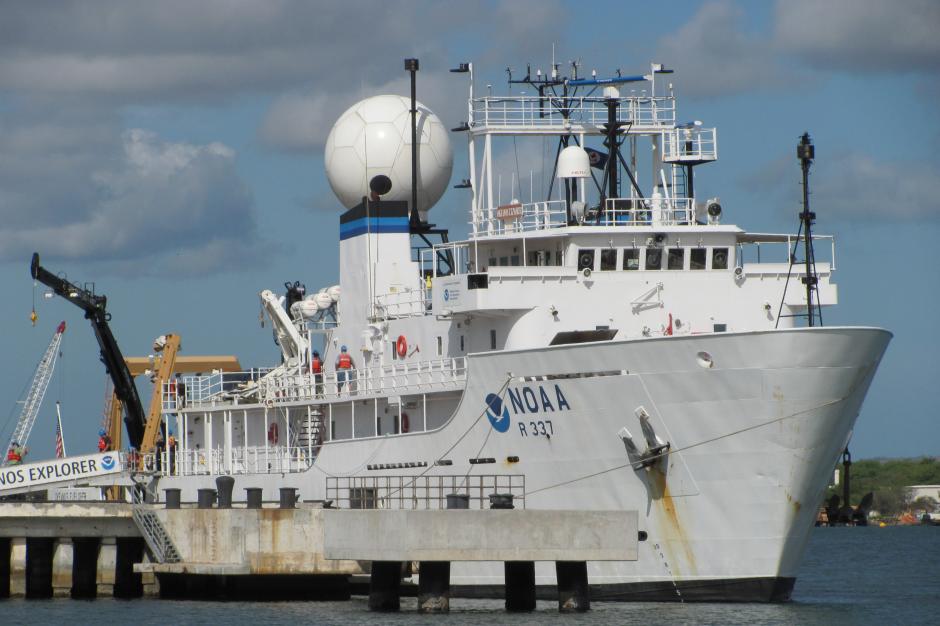News & Announcements
Two new oceanographic vessels will join the NOAA fleet
NOAA is in the process of acquiring two new oceanographic ships as part of the agency’s fleet rebuilding effort. Once in service, the new ships will support a wide variety of missions, ranging from general oceanographic research and exploration to marine life, climate and ocean ecosystem studies. The first ship, to be named Oceanographer, will be homeported in Honolulu. The second ship, to be named Discoverer, will be assigned a homeport at a future date.
NOAA launches major field campaign to improve weather and climate prediction
On January 7, NOAA launched a six-week scientific campaign from the island of Barbados in the Caribbean, using multiple human-piloted and autonomous vehicles, buoys, radar and computer modeling to investigate how the ocean, atmospher, and shallow clouds work together to create the weather and climate we live in. Called ATOMIC, or the Atlantic Tradewind Ocean-Atmosphere Mesoscale Interaction Campaign, the mission is the U.S.NOAA Ship Henry B. Bigelow concludes busy field season
The 2019 field season was a busy one for NOAA Ship Henry B. Bigelow, which logged 23,500 nautical miles--more than enough to circumnavigate the earth. Along the way, the ship conducted 757 bottom trawl surveys, enough to trawl all the way from the ship's Newport, R.I. homeport to Detroit, Mich. The ship also measured oceanographic conditions at 935 sampling stations and surveyed previously unexplored areas of the ocean, some a mile deep, with remotely operated vehicles.Meet the Crew: Commander Sarah Duncan, NOAA Ship Oscar Dyson
Long before she was Commander Sarah Duncan, the commanding officer of NOAA Ship Oscar Dyson, she was just Sarah. She and her cousins, seated around the dining room table playing cribbage with her grandfather, hung onto his every word as he shared tales from his adventures at sea.
NOAA Ship Okeanos Explorer finds shipwreck in the Gulf of Mexico
On May 16, 2019, NOAA Ship Okeanos Explorer discovered a shipwreck in the Gulf of Mexico while conducting an "engineering dive" to test new remotely operated vehicle (ROV) equipment. Researchers believe the wreck is likely a mid-19th century wooden sailing vessel. The find was made when ROV Deep Discoverer’s sonar picked up what appeared to be something in the shape of a shipwreck, and the team moved in to investigate.NOAA Ship Oscar Elton Sette expedition supports Hawaiian monk seal study
NOAA Ship Oscar Elton Sette departed on May 15 for a 27-day research expedition throughout the main and Northwestern Hawaiian Islands to support research and recovery of the endangered Hawaiian monk seal and threatened green sea turtle. The ship will deploy researchers to set up camps in the Northwestern Hawaiian Islands for four months.

